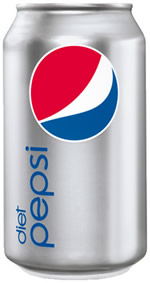Lets face it. Most places a person frequents, people are on their phones. Often, they are texting. I admit, I am part of the generation in which is dependent on texting and technology in general. I have often thought texting may be too good to be true. After doing some research, it has come to my attention that there is a condition known as “texting thumb.” This phenomenon occurs when a person’s thumb feels pain due to the frequent activity of texting and/or typing things into ones phone. How detrimental can texting really be to person’s thumb?
On average, it has been found that people send or receive 10 messages a day. For teenagers, the average number of texts sent a day for people between the ages of 18-24 was 67 messages a day, meaning they send 2,022 on average a month and received almost another 2,000 a month. Here is a link to a chart of the monthly average of texts sent and received per month in the year 2013 (divided into age groups).
The “texting thumb” is actually known as two different things:
1) The trigger thumb which entails the restriction of the tendon responsible for flexing the thumb. This strain is caused from the constant holding of a cell phone or stretching of the thumb to type text messages. The thumb can pop out of place and even remain in a curled position if extended too frequently.
2) Thumb arthritis which occurs in the carpometacarpal joint where the wrist and thumb are joined. Once this occurs, there is no treatment to fix the problem.
Texting thumb is referred to as de Quervain tendonitis or tenosynovitis. It involves inflammation in the tendons and the synovial sheaths that protected the tendons in the hand. Repeated irritation of these tendons leads to pain and a weakened grip. Permanent damage can occur thanks to the repetition and increased inflammation which can degenerate. These occurrences then result in pain in which can be severe and intrusive in everyday life.
Researchers from Turkey recruited about 150 people from the ages of 18-40. About half the population recruited fell under the category of ‘frequent texters’ (sending about 1,200 messages a month). Ultrasound imaging was able to measure the thickness of the tendons within the carpal tunnel, which ends at the tip of the thumb. The greater the thickness of the tendon, the more frequent a texter the person was found to be. This thickness again attributes to the pain and weakness of grip felt in the thumb and wrist areas.
There have been many cases reported of texting thumb that support the alternative hypothesis that texting thumb is a health risk to be concerned about.
There has been a relevant study involving a 48 year old woman who suffered from de Quervain tendonitis. The woman went to her primary physicians office to receive care after noticing her searing pain in her hands and weakness. After wearing wrist splints and reducing her texting to minimal amounts, her pain subsided after a three weeks. It appears her tendon sheath was 3 to 4 times more thick as a result of her constant texting beforehand. This thickness, as I mentioned before, attributes to much pain and weakness of a person’s hand grip.
Another case was reported of a 14 year old girl who admitted she had been texting 4 hours a day on average for two years. Her mother confirmed these actions were true. She had tissue swelling and pain due to thickness and severe tenderness in her right thumb. Her radiograph results were normal and she was not found to have a severe injury or disease. In order to heal, she wore a splint on her thumb and took aspirin. Her texting has since been limited to 45 minutes a day. This problem has not reoccurred since she made the changes to the time she now spends on her phone.
One group of researchers observed 27 people to see how excessive texting affected their thumbs. The motions of texting revealed their was extreme extensions and flexions of the thumbs. In addition, the motions revealed that such things as musculoskeletal disorders and several pain disorders (such as myofascial and fibromyalgia) could easily arise after prolonged periods of texting.
There are definitely cases in which show there is a correlation between texting and thumb-related problems. It seems texting thickens the tendons in a person’s hand, which then causes extreme pain and weakness. Although confounding variables could be a result of these cases and studies, texting has some effect on people’s thumbs that is still being researched. After reviewing this topic, it seems a person may want to lay off texting and instead spend time doing things like reading books or walking his or her dog.
http://www.businessinsider.com/chart-of-the-day-number-of-texts-sent-2013-3
https://www.rush.edu/health-wellness/discover-health/when-technology-hurts
http://ergonomics.about.com/od/De-Quervains_Syndrome/a/What_Is_Texting_Thumb.htm
http://www.wsj.com/articles/texting-frequently-with-thumbs-may-cause-tendinitis-1411410025
http://www.jfponline.com/index.php?id=22143&tx_ttnews[tt_news]=175766
Click to access 00b4951ec139770252000000.pdf
http://core0.staticworld.net/images/article/2014/01/texting_primary-100224994-large.jpg
http://www.eorthopod.com/images/ContentImages/hand/hand_cmc/hand_cmc_symptoms01.jpg
http://i.huffpost.com/gen/1292731/thumbs/o-WOMAN-TEXTING-SAD-570.jpg?1
http://jaoa.org/article.aspx?articleid=2094077











 When examining the results of the study, the researchers used odds ratios to show how strongly there is a connection between two things ( in this case pant ‘tightness’ and sperm count). The odds ratio being over one means there is a much more likely chance there is a correlation between the two. A narrower confidence level of 95% is used in this experiment to correspond with the 5% chance that results are due to chance (a conventional rule).
When examining the results of the study, the researchers used odds ratios to show how strongly there is a connection between two things ( in this case pant ‘tightness’ and sperm count). The odds ratio being over one means there is a much more likely chance there is a correlation between the two. A narrower confidence level of 95% is used in this experiment to correspond with the 5% chance that results are due to chance (a conventional rule).




 There have not been many substantial studies in which have raised concern with the higher levels of phenylalanine due to aspartame on the human brain. There have been a few studies that have been performed on children and their cognitive development after they have ingested aspartame, but there have been no real surprising outcomes. The studies with the rats have caused researchers and scientists to keep an eye on the use of aspartame and the effects it may have. I suggest more studies be done as the results of too much phenylalanine are not good. Starting off with experimental studies on the rats is ethical I believe but more must be completed.
There have not been many substantial studies in which have raised concern with the higher levels of phenylalanine due to aspartame on the human brain. There have been a few studies that have been performed on children and their cognitive development after they have ingested aspartame, but there have been no real surprising outcomes. The studies with the rats have caused researchers and scientists to keep an eye on the use of aspartame and the effects it may have. I suggest more studies be done as the results of too much phenylalanine are not good. Starting off with experimental studies on the rats is ethical I believe but more must be completed.








